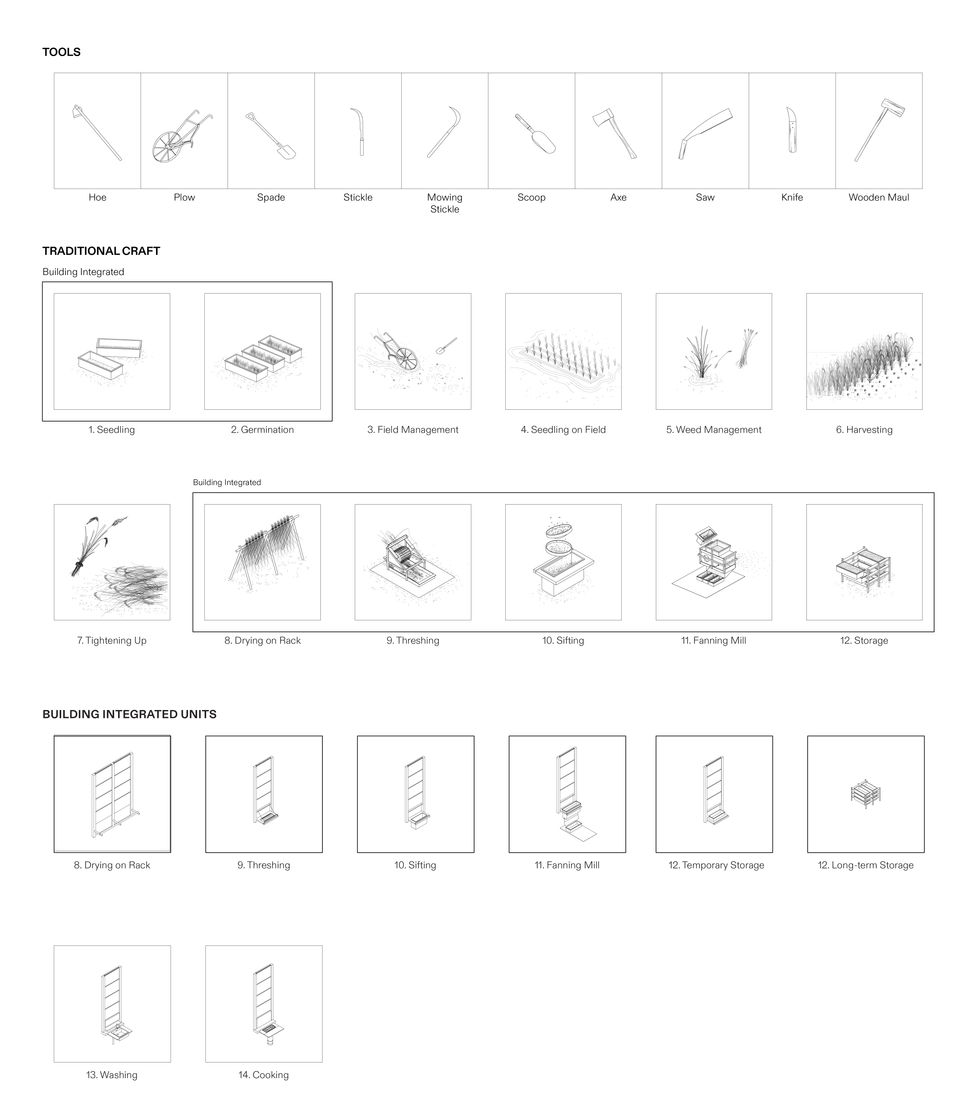Shack in the Paddyfield:
Assessing the Role of Satoyama and Micro-Homes through Peri-Urban Repopulation for Ensuring Local Sustainability
Microhome Kingspan Competition 2024
30 May 2024
Team
Yufei Ye (Alex)
Lixu Zhang (Mark)
Chon Kei Lam (Jacky)
Gerald Low
Japan has experienced significant urban migration over recent decades, resulting in issues such as overcrowding and heightened stress levels in urban areas. With the world’s oldest population, Japan faces particular demographic challenges in its rural regions, where 37% of residents are over the age of 65, approximately ten percentage points higher than the national average. This demographic shift, coupled with an outflow of younger residents and increased life expectancy, has led to abandoned land and deteriorating infrastructure. Currently, 13.8% of homes in Japan are vacant, predominantly in rural areas experiencing population decline.
To mitigate these issues and rejuvenate struggling municipalities, the Japanese government has implemented initiatives to incentivize young residents to relocate to the countryside and start businesses. This project aligns with such initiatives, with a focus on Urato Island in Shiogama, Miyagi—a community impacted by the 2011 tsunami and currently under restoration. The island’s economy, reliant on agriculture and tourism, faces long-standing challenges including depopulation, an ageing population, and a scarcity of successors, raising concerns about future sustainability.
An effective method using “undervalued” satoyama for repopulation should be considered, particularly through the practice of traditional rice farming (Sabusawa) under permaculture principles. This approach emphasizes sustainability and minimal intervention, aligning with the natural environment. The focus is on being aware of our surroundings and observing how nature operates, prioritizing observation over intervention in working and serving nature.
The project examines the implementation of modular micro-housing with Kingspan products as startup resources to facilitate a quick, affordable, and comfortable transition to rural life for young entrepreneurs.
The project also highlights the potential for enjoying and purchasing local food from satoyama as a highly attractive experience, contributing to the preservation of satoyama. Further feedback from participants will also be taken into consideration to improve housing, ensuring a tailored and effective support system for future settlers.
Making Sabusawa Rice
On Sabusawa, traditional farming methods are employed to grow rice due to the absence of natural rivers or other sources of fresh water. Even after the rice is harvested, the water is retained in the fields.
Snowmelt and rainwater are utilized for agricultural purposes, fostering the growth of micro-organisms in the mud and creating nutrient-rich soil. The rice grown on Sabusawa is of exceptional quality, though produced in small quantities, and is also used to make local sake.
The traditional inventory of craft has been adapted and attached as modular building-integrated units, allowing the shack to embody the process of making.
Net Zero with Kingspan
The project integrates modular housing solutions, specifically incorporating Kingspan products to enhance sustainability and energy efficiency. Kingspan, known for its high-performance insulation and building solutions, provides materials that ensure energy efficiency and good insulation, reducing their environmental footprint.
Net zero carbon lies at the heart of this project, and Kingspan’s products perfectly align with these objectives. Lifecycle carbon is broken down into different stages.
From the product stage, most of Kingspan’s products, such as the QuadCore Karrier wall panel, can provide proof of responsible sourcing and relevant sustainability certifications, which allow tracing the carbon footprint from the sourcing and manufacturing stages.
During the construction stage, easy installation and modular design are important factors as they help reduce construction waste (fewer offcuts) and have a lower cost compared to customised products. All Kingspan products fulfill expectations in this category.
Operational carbon needs to be considered in the occupation stage. Kingspan products provide clear technical information on performance, which allows estimating operational energy and cost. For instance, Kooltherm K103 Floorboard and Kooltherm K10 G2 Soffit Board offer high performance in insulation, minimising heat loss and further lowering energy consumption. This is critical as the energy harvesting area is limited on-site, therefore reducing energy consumption is key to achieving net zero energy and carbon.
In the end-of-life stage, reusability is important as it helps divert waste from landfill. Kingspan products, such as Kooltherm K10 G2 Soffit Board, are reusable with proper maintenance and careful removal. This creates a circular economy beyond the building’s lifecycle.
Local Sustainability
This project reclaimed timber elements from neighboring abandoned timber houses, including timber screens, internal walls, and structural elements that adhere to the traditional standard dimensions of 90mm x 90mm for posts and beams. These timber components are carefully disassembled on-site and then classified to determine their condition and structural integrity. Once evaluated, they are cut to standard modular sizes and treated for moisture and pests. To maximize the potential use of the salvaged timber materials, the structural elements in this project are primarily kept under 90mm x 90mm.












